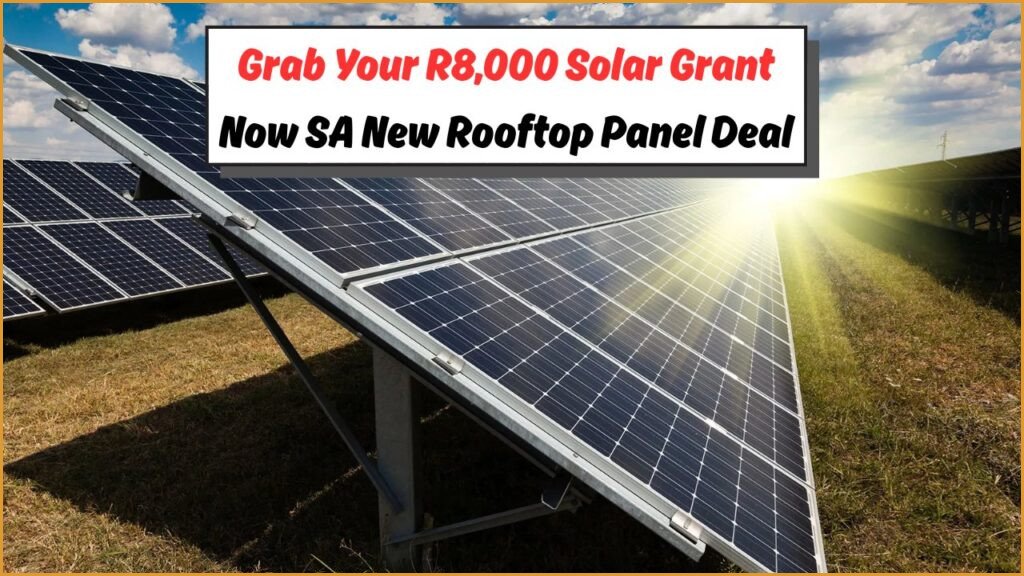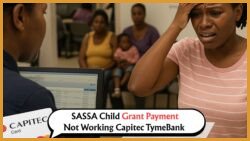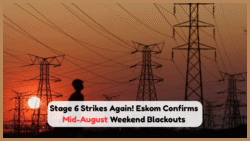New SA Solar Grant – In August 2025, the South African government has launched a brand-new solar grant scheme, offering a generous R8,000 rebate per household for installing rooftop solar panels. With rising electricity costs and increasing load‑shedding, many South Africans are seeking cleaner, cost‑saving alternatives. This new solar grant initiative is timed to provide immediate relief and encourage residential adoption of solar power. It builds on previous schemes, but offers expanded eligibility and simplified application processes. Households stand to save thousands on upfront costs and reduce monthly electricity bills significantly, making this an ideal moment to go solar. This article explains the solar rebate scheme in clear terms, walking homeowners through eligibility, benefits, application steps, expected savings, and departmental support. Readers will find structured guidance, helpful tables, and FAQs—perfect for anyone considering rooftop solar before the grant funds are exhausted.

Eligibility and Rebate Details for New SA Solar Grant
Here is who qualifies and what the grant covers:
- Households in South Africa that are not already on large-scale commercial or industrial solar programmes.
- Residential users with prepaid or conventional domestic electricity accounts.
- Applicants must be South African citizens or permanent residents.
- Must not have received prior solar rebates in earlier grant cycles.
Key Rebate Benefits
- Flat R8,000 rebate per household installation.
- Covers up to 50% of hardware cost for standard-panel systems.
- Simple one-time cash rebate after verified installation.
Rebate Coverage Table
| Benefit Aspect | Details |
|---|---|
| Rebate Amount | R8,000 per household |
| Coverage Percentage | Up to 50% of hardware cost |
| Eligible System Size | Up to 5 kW rooftop installations |
| Grant Funding | Limited, first‑come first‑served |
| Payment Timing | After verification and inspection |
| Application Fee | None |
| Eligibility Reset | New grant cycle annually |
Application Process and Timeline
The application process is designed to be streamlined:
- Submit an online application via the official portal.
- Upload proof of identity, utility bill, and site photographs.
- Installer must be SANAS accredited.
- Inspection scheduled within 14 days of application.
- Rebate disbursed within 7 days post-inspection.
- Applications processed on a first-come basis; funds likely to run out quickly.
Process Steps
- Visit official solar grant portal.
- Register an account and log in.
- Complete eligibility questionnaire.
- Upload supporting documents.
- Schedule installer visit.
- Wait for inspection.
- Receive rebate via bank transfer.
Financial Benefits and Savings Overview
Understand how the rebate plus solar installation delivers long‑term savings:
- Immediate cost reduction on upfront hardware expense.
- Significant drop in monthly electricity bills.
- Protection against future Eskom tariff hikes.
Savings Estimate Table
| Capacity Installed | Estimated Cost (Rands) | Rebate (‑R8,000) | Net Cost | Monthly Electricity Saving | Payback Period (years) |
|---|---|---|---|---|---|
| 2 kW system | R34,000 | R8,000 | R26,000 | R700 | ~3.1 |
| 3 kW system | R48,000 | R8,000 | R40,000 | R1,050 | ~3.2 |
| 4 kW system | R62,000 | R8,000 | R54,000 | R1,350 | ~3.3 |
| 5 kW system | R75,000 | R8,000 | R67,000 | R1,650 | ~3.4 |
| Larger than 5 kW | Not eligible | N/A | N/A | N/A | N/A |
Technical Requirements & Installation Standards
Solar panel systems must meet certain technical specifications:
- Panels must be monocrystalline or polycrystalline.
- Inverter capacity must match system size.
- Compliance with IEC and SANS standards is mandatory.
- Installers must be SANAS-accredited and registered.
- System must include performance monitoring and warranty coverage.
Technical Compliance Summary
- Panel efficiency ≥ 18%
- Inverter efficiency ≥ 95%
- 5‑year minimum service warranty
- 10‑year performance guarantee
- Electrical safety certificate required
Government Departments and Contact Info
For assistance, enquiries or technical support, contact the relevant departments:
- Department of Mineral Resources and Energy (DMRE) – solar grant administration.
- National Energy Regulator of South Africa (NERSA) – standards and compliance.
- Local municipal offices – verification and inspection support.
Contact Details Table
| Department | Role | Contact Number | Email Address |
|---|---|---|---|
| DMRE (Solar Grant Unit) | Administer grant applications | 012‑444‑3456 | solarguide@dmre.gov.za |
| NERSA Standards Division | Oversight on technical and safety standards | 012‑401‑3200 | standards@nersa.org.za |
| Johannesburg Municipality Energy Office | Local support for JHB applicants | 010‑020‑1234 | solarhelp@joburg.gov.za |
| Cape Town Municipality Renewables Dept | Local support for CT applicants | 021‑400‑5678 | renewables@capetown.gov.za |
| Durban Metro Energy & Efficiency Office | Local support for Durban residents | 031‑409‑7890 | solarinfo@durban.gov.za |
Practical Tips for Maximizing Your Grant
These tips help optimize your grant use and solar installation:
- Compare multiple accredited installers for best quote.
- Secure at least a 5 year workmanship warranty.
- Use energy-efficient appliances to enhance solar output.
- Plan system size according to consumption and roof orientation.
- Seek municipal advice on feed‑in tariffs or net‑metering options.
Tips in Brief
- Get at least 3 quotes from SANAS installers.
- Confirm installer’s warranty terms in writing.
- Install battery backup if finances permit.
- Position panels for north‑facing exposure.
- Register for utility net‑metering for excess power credit.
Common Pitfalls to Avoid
Some applicant mistakes can delay or invalidate the grant:
- Submitting incomplete documentation.
- Choosing unaccredited installers.
- Over‑sizing system beyond 5 kW eligibility.
- Ignoring system warranty or performance guarantees.
- Missing inspection window leading to delayed rebate.
Pitfall Checklist
- Documents complete and legible
- Installer SANAS‑accredited
- System ≤ 5 kW capacity
- Warranty and performance certificates provided
- Inspection scheduled promptly
Additional Advisory Notes
Always read grant terms thoroughly and keep communication records with the installer and grant office. Preserve copies of application, invoice, inspection certificate, and bank confirmation.
Step‑by‑Step Guide to Applying
Follow this user‑friendly sequence to maximise success:
- Register your household and utility account online.
- Review eligibility checklist and prepare documents.
- Select SANAS‑accredited installer and request performance contract.
- Upload documents and schedule site inspection.
- Track application status via portal dashboard.
- Receive confirmation of rebate payment.
Application Workflow Table
| Step | Action | Estimated Timeframe |
|---|---|---|
| 1 | Register account | 15 minutes |
| 2 | Prepare and upload documents | 1–2 hours |
| 3 | Installer site visit | 1–2 days |
| 4 | Inspection and verification | ~14 days |
| 5 | Rebate processing and payment | ~7 days post‑inspection |
Monitoring and Aftercare Support
Once installed, you should track performance closely:
- Use inverter monitoring app or web portal.
- Compare daily generation with expected yield.
- Contact installer promptly if output drops.
- Keep records of service calls and maintenance.
Aftercare Best Practices
- Review system data weekly for 3 months.
- If under‑performance >10%, lodge complaint with installer.
- Contact NERSA if installer fails to respond.
- Retain documentation for at least 5 years.
Support Contacts
For maintenance or complaints, use same departmental contacts listed earlier.
Grant Scenario Summary Table
| Scenario | Upfront Cost | Rebate | Net Capital Cost | Annual Savings | Payback Period |
|---|---|---|---|---|---|
| 3 kW home system | R48,000 | R8,000 | R40,000 | R12,600 | ~3.2 years |
| 4 kW system with battery | R110,000 | R8,000 | R102,000 | R16,200 | ~6.3 years |
| Prepaid meter household | R62,000 | R8,000 | R54,000 | R16,200 | ~3.3 years |
| Conventional billing home | R62,000 | R8,000 | R54,000 | R16,200 | ~3.3 years |
| Early applicant advantage | – | – | – | Priority processing | Fast rebate |
Thank you for reading. Take action early to lock in the R8,000 solar rebate; it offers immediate savings, long‑term energy independence, and helps South Africa shift toward a cleaner, more resilient energy future. Act now before grant funding is exhausted.
FAQs of New SA Solar Grant
1. How long will the R8,000 solar grant run out?
Funds are allocated on a first‑come, first‑served basis and may be depleted within weeks of launch in August 2025.
2. Can tenants apply for the solar rebate?
Only property owners or homeowners may apply. Renters must get owner’s permission.
3. Is battery storage covered by the rebate?
No, the rebate covers only rooftop panels and inverters, not batteries or storage systems.
4. What happens if installation is delayed after grant approval?
You must complete installation within 60 days or you risk losing the rebate eligibility.
5. Where can I lodge a complaint if the installer doesn’t honour warranties?
Contact NERSA Standards Division or DMRE’s Solar Grant Unit using the contact details provided above.
How can homeowners benefit from the new SA Solar Grant?
By receiving an R8,000 rebate for installing rooftop panels in August.
What is the deadline to apply for the R8,000 rebate for rooftop panels?
 Cape Town’s Water Crisis Escalates – Dam Levels Fall Below 35%, Day Zero Alert Activated for August
Cape Town’s Water Crisis Escalates – Dam Levels Fall Below 35%, Day Zero Alert Activated for August
The rebate is available until the end of August.








